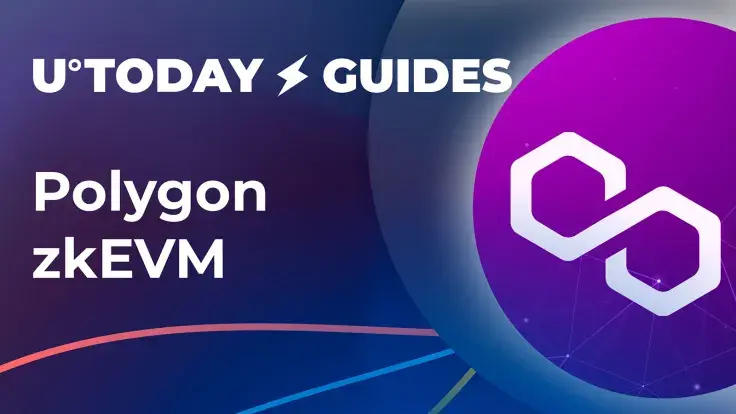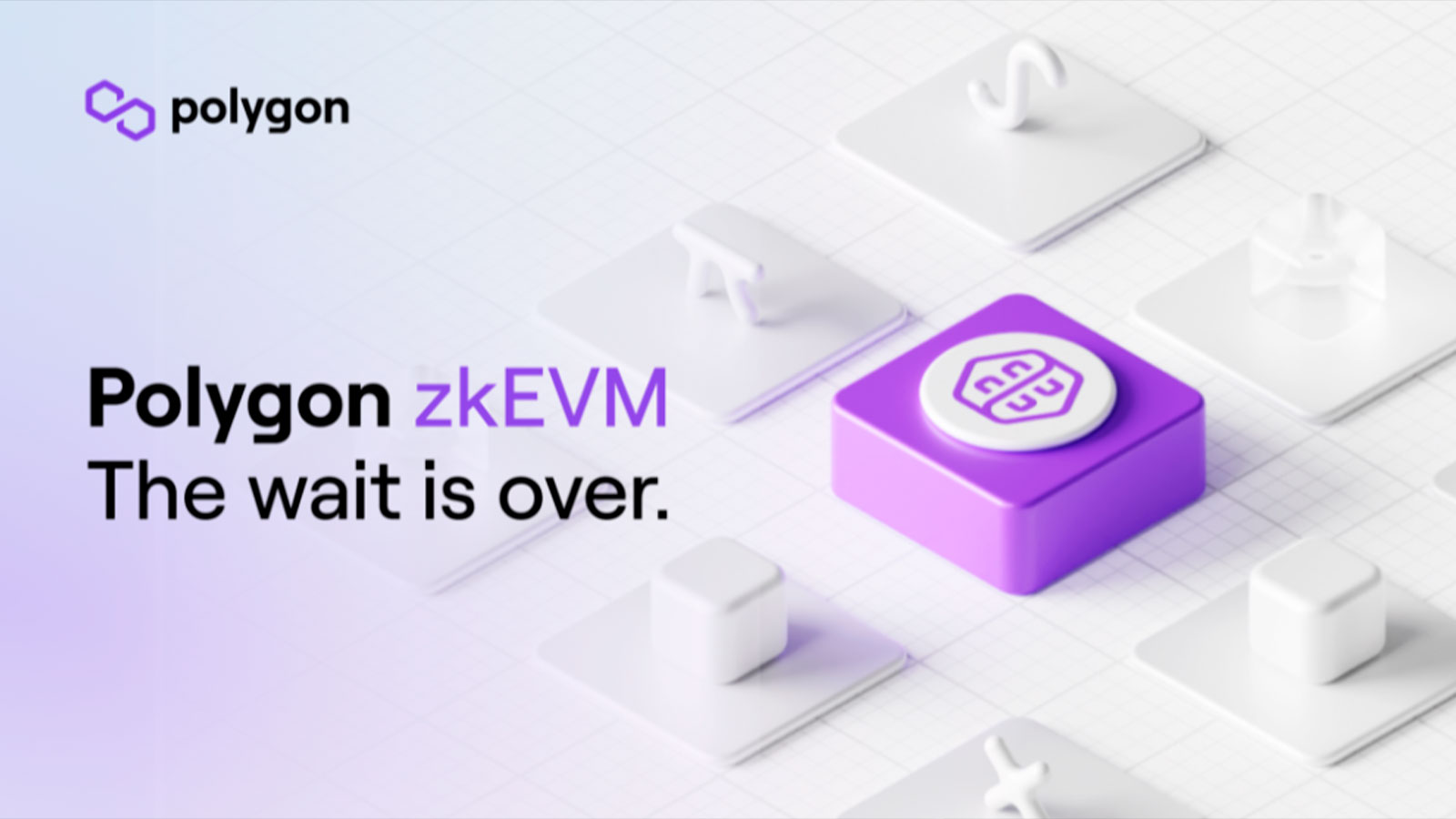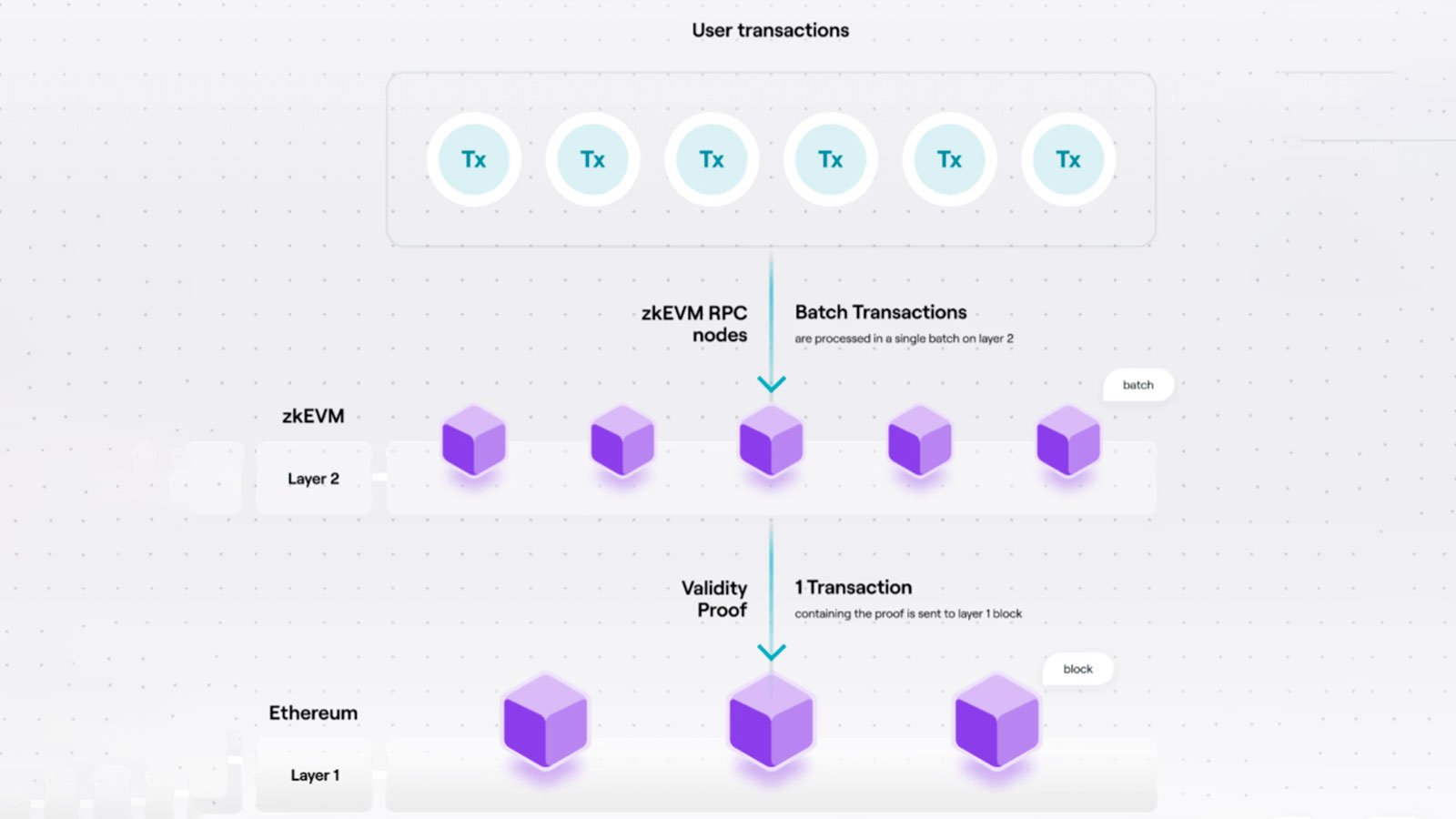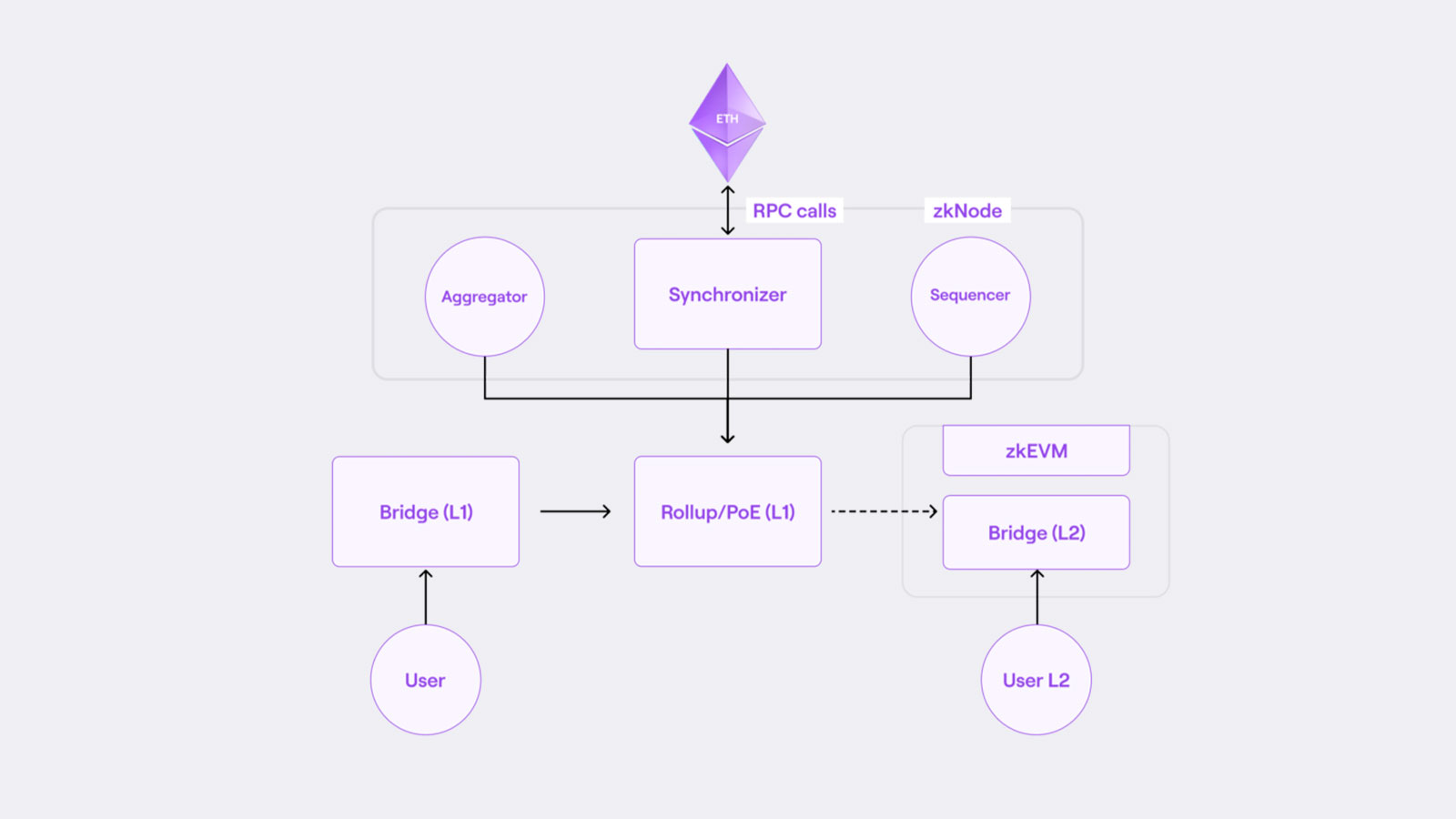
On July 20, 2022, Polygon Network (MATIC), an ecosystem of Ethereum (ETH) scaling solutions, unveiled zkEVM, the latest addition to its stack of solutions. The new product is the first open-source zk-rollup natively interoperable with EVM.
In this guide, we will cover the features of the new release and the opportunities it opens for Ethereum (ETH) scaling and Web3 progress as a whole.
Polygon Network releases zkEVM: Why is this crucial for crypto?
zkEVM (an abbreviation for “zero-knowledge Ethereum Virtual Machine”) is a second-layer scalability protocol on the top of Ethereum (ETH). This means that it is designed to make the operations of Ethereum (ETH) dApps faster and cheaper without compromising its decentralization and security.

Despite the fact that second-layer solutions have been helping Ethereum (ETH) scale since 2018, zkEVM launches to change the narrative in L2s.
- zkEVM supports Ethereum (ETH) smart contracts without changes, there is no need to modify the code before moving from L1 to L2;
- zkEVM onboards all Ethereum (ETH) opcodes; every instrument from the “original” Ethereum (ETH) can therefore be implemented in zkEVM;
- Using on-chain data allows users to save up to 90% in fees;
- zkEVM has been open source and MIT-licensed since day one: every Web3 team can experiment with zkEVM and audit it;
- Advanced zero-knowledge techniques: recursive STARKS guarantee extreme scalability while zkSNARKS are integrated for cost optimization.
With zkEVM introduced, Polygon Network (MATIC) strengthened itself as the most productive and cutting-edge team in Ethereum’s L2s ecosystem.
What are Layer 2 solutions (L2s) — and why does Ethereum (ETH) need them?
Layer 2 solutions (also second-layer solutions, or L2s) are blockchain protocols built on the top of the Ethereum (ETH) mainnet. As Ethereum (ETH) itself has a low bandwidth — it can only process 15 transactions per second — it becomes too slow and inefficient for modern decentralized applications.
As such, developers decided to create systems designed to reduce “transactional pressure” on the Ethereum (ETH) mainnet. Simply put, they partially process the computations off-chain and then broadcast the results to Ethereum. Layer 1 Ethereum (ETH), in turn, verifies these results and includes them into new blocks.
Since the inception of the first Ethereum (ETH) L2 solution, Rayden Network (RDN), which used payment channels not unlike Bitcoin’s Lightning, a number of teams released their own version of scaling designs. By 2022, rollups proved to be the most impressive technique in terms of resource efficiency, speed and reduced transaction costs.
What are zk-rollups and zk-proofs?
Zero-knowledge rollups, or zk-rollups, should be considered a class of second-layer solutions designed to advance the throughput of the Ethereum (ETH) mainnet. Zk-rollups bundle (roll up) multiple Ethereum (ETH) transactions into batches before posting only minimal data to the Ethereum (ETH) mainnet.

Technically, a zk-rollup chain is an off-chain protocol that operates outside of Ethereum’s (ETH) mainnet but leverages on-chain Ethereum (ETH) smart contracts. This smart contract deconstructs and verifies all of the transfers “bundled” in a single L2 transaction.
Zk-proof is another crucial concept of L2 architecture. In this case, “zero-knowledge” means that these cryptographic proofs allow both parties (L1 and L2) to prove the correctness of a “statement” without revealing the statement itself. Zk-rollups use proofs to verify the correctness of off-chain state transitions without the necessity of re-executing transactions on Ethereum (ETH) mainnet.
What is Polygon Network (MATIC)?
Polygon Network (MATIC) was launched as Matic Network in October 2017. The project is helmed by Ethereum (ETH) veterans Jaynti Kanani, Sandeep Nailwal, Anurag Arjun and Mihailo Bjelic. Initially, it was introduced as a Plasma-based L2 on top of the Ethereum (ETH) network. Plasma is a class of proof-of-stake solutions for Ethereum (ETH) scaling; not unlike rollups, its mechanisms periodically send portions of transactions to Ethereum (ETH) in a compressed form.
In 2019, Polygon (then, Matic Network) raised $5.6 mln in its ICO. One year later, the project decided to migrate from Ethereum (ETH) to its own blockchain — technically, Ethereum (ETH) sidechain. In 2021, the project rebranded to Polygon Network and introduced a full-scale ecosystem of L2 solutions for Ethereum.
Currently, its stack includes Polygon Proof-of-Stake, a blockchain that handles MATIC transactions and onboards Polygon-based dApps, and Polygon Supernets, purpose-made sub-blockchains. Also, Polygon Nightfall privacy-focused rollup is in mainnet beta. Last but not least, its ecosystem of rollups — Avail, Zero, Miden and, most recently, zkEVM — is under development.
zkEVM by Polygon Network: Ethereum (ETH) scaling, reconsidered
zkEVM is a new rollup design developed by Polygon Network (MATIC) engineers. It is poised to radically streamline the developers' experience for dApps focused on using Ethereum’s L2s as a technical basis.
Basics
Introduced on July 20, 2022, zkEVM is the latest addition to Polygon Network’s (MATIC) L2 scalability stack. zkEVM promotes itself as a first-ever EVM-compatible ZK-based rollup. The project is 360° open source: since its very first days, every Ethereum (ETH) enthusiast can use, audit and fork its codebase.
Polygon Network’s zkEVM is focused on achieving Ethereum-level security and decentralization, drastically boosting throughput, performance and resource efficiency. zkEVM leverages Plonky2, a cutting-edge zk-based scaling technology. Plonky2 makes very light proofs and facilitates recursive verification of SNARKS (“Succinct Non-Interactive Argument of Knowledge”). This allows users to verificate proofs at 100x reduced speed.

Besides improved proof-generation times, zkEVM creates opportunities for unbelievably cheap transactions; every dApp on zkEVM is far more cost-efficient than its Ethereum-based competitors.
Seamless migration from Ethereum (ETH)
But the most impressive “secret sauce” of the new product is its 100% compatibility with Ethereum (ETH). Developers can literally utilize the same instruments they used while building on-chain applications for Ethereum (ETH) mainnet.
Developers can run Ethereum’s smart contract on zkEVM without changing a single line of code. All Ethereum (ETH) tools can be seamlessly integrated into zkEVM-based dApps: the new product will support all Ethereum (ETH) opcodes. Thus, Ethereum’s (ETH) battle-tested security will be inherited by a new product:
EVM-equivalence means that any smart contract or dev tool that you can use on Ethereum can be used on Polygon #zkEVM. It’s just like using Ethereum, but with the groundbreaking scaling power of ZK tech.
Unmatched resource efficiency
Besides EVM equivalence, zkEVM leverages enforced censorship resistance architecture and advocates a decentralized-by-default design. Polygon zkEVM employs an extendable EVM processor with a new zk-assembly language to stay on the cutting edge of Web3 innovation.
Technically, Polygon zkEVM is powered by Polygon Zero’s (previously Mir Protocol) fastest zk-proof design in Web3. zkEVM’s zkSNARK utilizes the minimum possible resources of Ethereum’s L1 for more efficient computations.
Timeline
After the official announcement of Polygon zkEVM’s release in July 2022 and making its code-base open source, Polygon Network (MATIC) engineers are heads down, preparing for their public testnet release.
As such, a public testnet can be live as soon as Q3, 2022. The mainnet release of the game-changing protocol is tentatively scheduled for early 2023.
Bottom line
Polygon Network, a leading ecosystem of Ethereum L2 scaling instruments, unveiled its zkEVM rollup. Polygon zkEVM is set to be “EVM-equivalent” as it supports all Ethereum (ETH) smart contracts and development instruments.
Besides EVM equivalence, Polygon zkEVM melds super-low fees and near-zero latency with the battle-tested security of the Ethereum (ETH) mainnet.
 Gamza Khanzadaev
Gamza Khanzadaev Tomiwabold Olajide
Tomiwabold Olajide Arman Shirinyan
Arman Shirinyan Godfrey Benjamin
Godfrey Benjamin